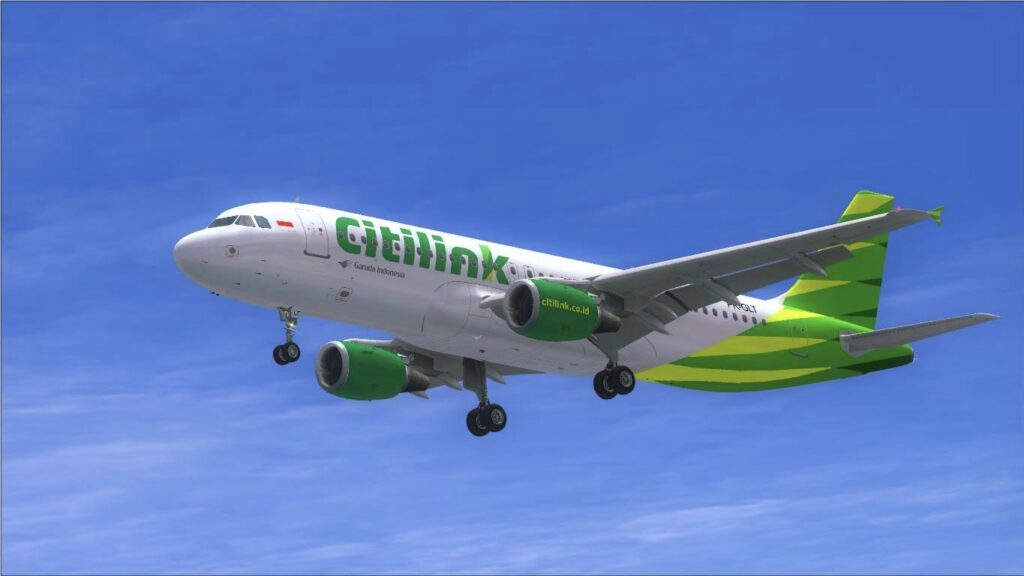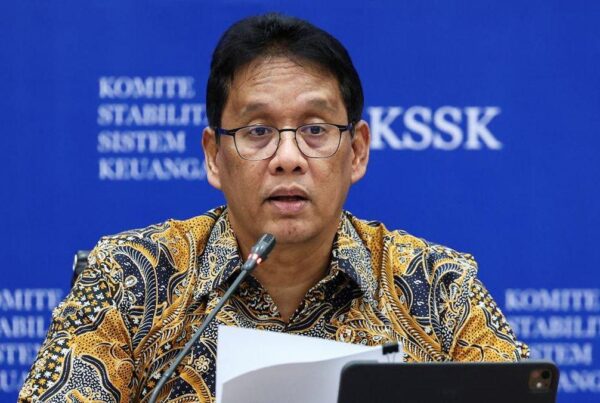Garuda Indonesia is facing a new phase of recovery after Danantara approved a capital injection of Rp23.67 trillion through the PMTHMETD scheme. This jumbo financing is projected to be a turning point for the state-owned airline, which in recent years has been beset by financial problems, a grounded fleet, and operating burdens that have weighed on the company's performance.
In the initial stage, this capital injection is designed to strengthen the capital structure while also enhancing the operational capacity of Garuda Indonesia and its subsidiary, Citilink. In addition, this funding support reaffirms Garuda's position as one of the pillars of national connectivity for the world's largest archipelagic country. The transformation designed by Danantara is projected to begin showing results in the third quarter of next year.
Garuda Indonesia's Financing Plan and Transformation Direction
Two main financing components—cash-deposit funding totaling Rp17.02 trillion and debt conversion of Rp6.65 trillion—became the basis for strengthening Garuda Indonesia's capital structure. The PMTHMETD scheme enables the capital injection process to proceed more quickly without the need to issue pre-emptive rights to securities first, a strategic step to accelerate the recovery.
This funding is also part of the long-term restructuring that has been prepared since the company experienced a crisis during the pandemic. Amid rising operating costs and a mounting debt burden, Danantara's decision to inject capital signals confidence in the potential of Indonesia's domestic aviation market, which has recovered.
Garuda Indonesia Financing Composition
The funding scheme includes two main instruments. First, a cash deposit of Rp17.02 trillion that will immediately strengthen the company's cash reserves. The funds will be used for working capital, fleet maintenance, and the restart of aircraft that have not been operating for some time. Secondly, the conversion of shareholder debt amounting to Rp6.65 trillion, which automatically lowers the liability burden and improves financial ratios.
That cash-payment move was a breath of fresh air for the airline that had previously recorded losses of up to US$180.7 million in the third quarter of 2025. The losses have restricted the company's room to maneuver to expand or restore services. With this new structure, Garuda Indonesia has the potential to gain greater leeway in maintaining cash flow and cost efficiency.
In addition, this funding strengthens Garuda's position amid the increasingly tight competition among regional airlines. Other airlines have aggressively pursued efficiency and fleet upgrades. Therefore, capital injections have become one of the crucial steps to maintain Garuda's competitiveness in the international market.
Allocation of Funds for Operations and Maintenance
Approximately 37% of the total funding, around Rp8.7 trillion, is directed toward fleet maintenance and daily working capital needs. The top priority is to reactivate the aircraft that has been grounded for a long time due to maintenance funding constraints. The non-operational fleet has become a major constraint in maintaining flight frequencies and meeting market demand.
In addition to maintenance, this fund will strengthen internal processes such as spare parts procurement, airport operations, crew training, and the improvement of service standards. With the large number of routes that have been reopened, the use of funds must be carried out efficiently so that its contribution to revenue can be felt.
Thanks to this allocation, Garuda Indonesia is expected to be able to once again position itself as a premium airline with global standards. The recovery of fleet quality also has a significant impact on passenger confidence, especially after the pandemic triggered changes in consumer preferences that place greater emphasis on comfort and safety.
Great support for Citilink Indonesia.
The largest share of funding, namely around 63% or Rp14.9 trillion, is channeled to Citilink Indonesia. The funds are used to strengthen operational capabilities, pay off fuel debts to Pertamina, and expand the fleet. This step marks a transformation not only for the parent company but for the entire Garuda airline group.
Citilink plays an important role in the low-cost carrier segment that continues to grow in Indonesia. With strong domestic demand, Citilink's operational consistency is the key for the Garuda Group to return to profitability. In addition, debt payments to Pertamina are necessary to ensure the fuel supply remains stable and uninterrupted.
This support also provides room for Citilink to expand routes, increase fleet utilization, and strengthen its position as a leading player in the domestic market. Operational efficiency and more optimal fleet utilization are the determining factors in the success of this strategy.
National Connectivity and the Strategic Rationale for Funding

Indonesia, as an archipelagic country with more than 17,000 islands, has a highly strategic need for air transportation. Garuda Indonesia, as the national airline, plays an important role in maintaining connectivity among various regions. Therefore, Danantara's decision is not merely a commercial investment move, but also a strategic move.
That support reflects the important value of the aviation sector for economic growth and national integration. Moreover, the domestic aviation industry is currently showing strong signs of recovery after the pandemic. Passenger numbers have risen again, even though challenges such as fuel costs and competition remain.
Garuda Indonesia as a national strategic asset.
Garuda Indonesia serves as the backbone of the nation's connectivity with strategic routes that connect the eastern and western regions of Indonesia. Its role in logistics distribution, people's mobility, and tourism support makes its operational sustainability a key factor for the national economy.
As the national flag carrier, Garuda also carries symbolic value. The image and reputation of this airline are closely tied to Indonesia's image in the eyes of the international community. Therefore, its success in recovery is important not only for the company but also for the national reputation.
The previous government supported Garuda's restructuring efforts, but the current transformation is highly dependent on the implementation of a new strategy resulting from the capital injection. With substantial financial backing, the opportunity to improve performance increases, as long as management is able to execute the plan consistently.
Post-Loss Recovery and Operational Challenges
Loss of US$180.7 million in the third quarter of 2025 became one of the indicators of how severe Garuda's financial condition was before Danantara's funding. With an exchange rate of Rp16,654 per dollar, the losses amount to nearly Rp3 trillion. This condition narrows the company's space to perform fleet maintenance and extends operating hours.
In addition to financial problems, operational challenges such as fluctuating fuel costs, route competition, and stringent regulations in the aviation industry have become additional obstacles. Airlines also have to adjust post-pandemic operating standards that demand greater efficiency and comfort.
Capital strengthening provides an opportunity to overcome several of those obstacles. However, long-term restructuring must be accompanied by management consistency in maintaining cost efficiency and fleet productivity.
Transformation Prospects and Q3 2026 Target
Danantara expressed optimism that Garuda Indonesia's transformation will be visible starting in the third quarter of next year. The target includes an increase in fleet utilization, an increase in the number of passengers, and an improvement in operating margin.
To achieve that target, management will focus on optimizing the main routes, improving service quality, and implementing tighter cost management. In addition, the use of funds for fleet maintenance becomes a determining factor in the success of the transformation.
It is important to note that the aviation industry is highly sensitive to external factors such as fuel prices and global conditions. Therefore, the achievement of the targets will be greatly influenced by changes in market dynamics.
Risks, Challenges, and Implementation Oversight

Large funding does not guarantee the success of the transformation if it is not managed effectively. Therefore, oversight of the use of funds, periodic evaluations, and transparency become important factors. Several challenges still have to be watched out for, especially related to the efficiency and accuracy of capital allocation.
The aviation sector is known to have high operating costs and a high dependence on external factors. In addition, airlines must balance between service improvement and cost control.
Fuel Risk and Global Uncertainty
The price of fuel is one of the largest cost components for the aviation industry. A surge in global prices can significantly affect profit margins. In addition, global geopolitical conditions can disrupt supply and flight operations.
Garuda Indonesia must prepare hedging strategies and route efficiency to reduce that risk. New funding provides room to readjust the cost strategy, but still requires caution in implementation.
The risk of uncertainty also arises from changes in international and domestic regulations. Any changes to regulations related to safety or operations will impact the airline's cost structure.
Route Efficiency and Fleet Utilization
Route optimization is the key to boosting operational performance. Garuda must ensure that the routes that are opened yield a positive margin. Determination of inefficient routes can lead to waste of fuel costs, crew, and maintenance.
Fleet utilization is also an important indicator. The higher the aircraft utilization rate, the greater the revenue potential that can be earned. With many aircraft still grounded, Garuda's challenge is to accelerate the maintenance process so that the fleet can resume operations.
In addition, timely maintenance improves passenger safety and comfort. Transformation will not succeed if technical and operational standards are not consistently met.
The Importance of Internal Oversight and Transparency
The use of funds amounting to Rp23.67 trillion requires a stringent monitoring system. Transparency in the preparation of reports on the use of capital is important to maintain the trust of the public and investors.
The oversight model involves internal and external audits, periodic evaluations of fleet maintenance projects, and monitoring the performance of Citilink and other Garuda units. With proper oversight, the risk of budget leakage can be minimized.
An integrated online reporting system can also help monitor the progress of the transformation. Thus, management can ensure that every allocation delivers the maximum impact for operations.
A capital injection of Rp23.67 trillion from Danantara has become a strategic move that opens up great opportunities for the revival of Garuda Indonesia. With a structured allocation of funds and clear transformation targets, the company has the opportunity to improve performance and strengthen its role in supporting national connectivity. Nevertheless, the success of the transformation depends greatly on the effectiveness of the implementation and the ability to maintain operational efficiency. To understand the dynamics of the aviation industry and other related news, readers can continue to another article on Insimen















